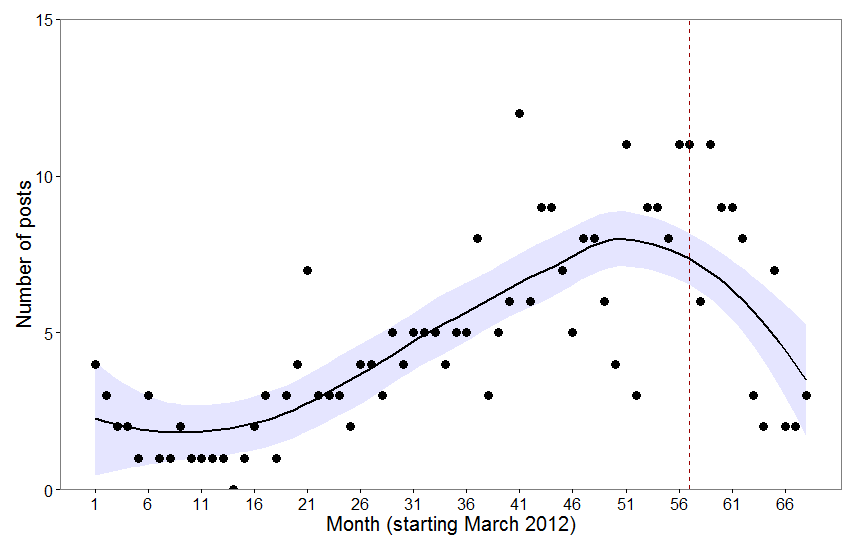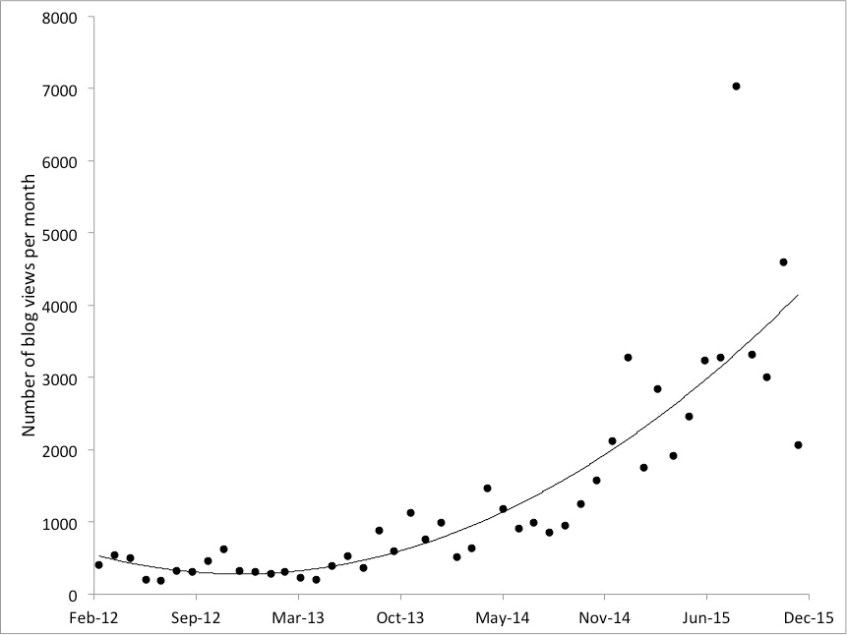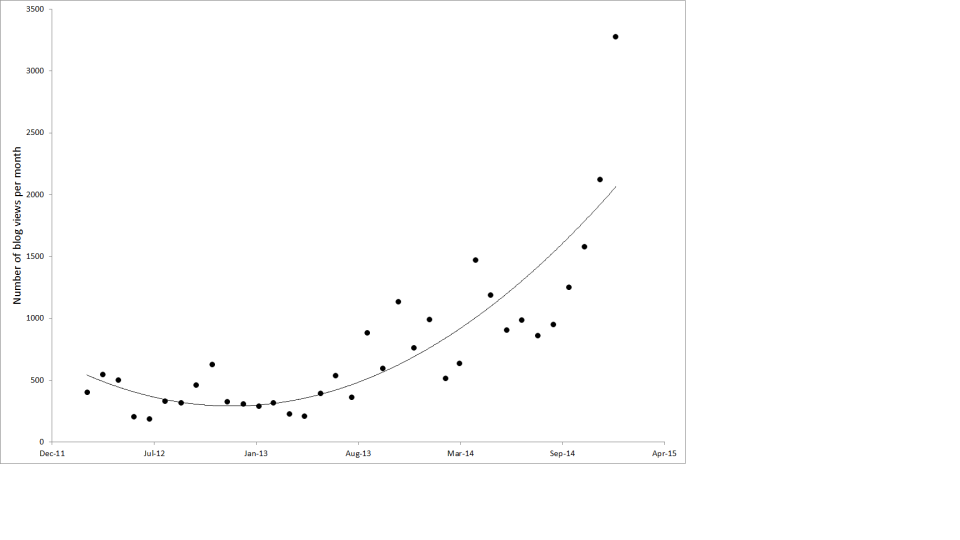
On this last day of 2018 I thought I’d review twelve months of blogging by highlighting the 10 posts that I published this year which have received the most reads, and the perennial favourites from previous years.
The most viewed post of 2018 was Should we stop using the term “PhD students”? with 1,743 views. That’s perhaps not surprising as there is a huge appetite for information related to early career researchers.
More surprising, but very satisfying, with 1,081 views The evolution of pollination systems in one of the largest plant families: a new study just published – download it for free was the second most viewed post published this year. The fact that the paper it relates to has gestated, in concept and in execution, for over 20 years, has 75 authors from almost 20 countries, with a roughly 50:50 gender split, made this my personal favourite of the year.
The guest post by Karin Blak, my wife, on How can academics help students with anxiety issues? generated a lot of comments on Twitter and Facebook, and comes in third with 729 views. If you’ve not read any of Karin’s posts on her own blog, which relate to all types of relationships, intimacy, and so forth, they are highly recommended.
Fourth most viewed was Is there really a “battle for the soul of biodiversity” going on at IPBES? (456 views) which I updated just this week to reflect the latest correspondence in Nature.
Number five is XI International Symposium on Pollination, Berlin, April 16th -20th, 2018 (424 views). I’m pleased that this helped to generate a lot of interest in the conference as I was asked by the organisers to present the keynote lecture, initially agreed, but then had to pull out as the timing in relation to our undergraduate Tenerife Field Course was problematical. I heard from those who attended that the symposium was great and I’m sure that David Inouye did a much better job than I could have done at delivering the keynote!
The impact of building a new university campus on urban bird diversity and abundance: a seven-year study is sixth with 407 views. Expect an update on this in 2019 as we complete the final round of winter and spring surveys.
Being ill is good for blogging as demonstrated by the 406 views of the seventh-ranked The good and the bad in biodiversity. It was also a useful example to use in my first year biodiversity class.
The weird weather of March last year clearly interested people: Can pollinators survive sudden changes in the weather? (362 views) was the eighth most viewed.
And of course pollinators are always popular: There ain’t no b(ee) in Starbucks (356 views) came ninth, whilst Hunting the Chequered Skipper: an encounter with England’s latest species reintroduction project (296 views) was tenth.
Those are the statistics for posts that I published in 2018. But all of these are exceeded by a post first published in 2016: How to deal with bumblebees in your roof received 6,395 views this year, six times as many as it has had in the previous two years. Not sure what has gone on here: are bumblebees nesting in roofs becoming more frequent? Perhaps so – the main roof nester is the Tree Bumblebee (Bombus hypnorum) which has become ever-more common since its arrival in the British Isles in 2001.
The second most viewed post overall was also published a while ago, in 2015: How does a scientist’s h-index change over time? was viewed 4,081 times. This no doubt reflects an increasing focus on such easily measurable (but rather flawed) metrics for evaluation (self- and external-) of an individual’s progress as a scientist.
Interestingly these are also the two most viewed posts of all time on my blog, though the order is different: How does a scientist’s h-index change over time? has had 12,355 views and How to deal with bumblebees in your roof has had 7,549. I suspect that posing a question in the title of a blog post has some influence on viewing figures – most of my all-time viewed posts are phrased as questions and people searching for information often google a question. I just pitched that idea to Karin and she half agreed but suggested that it’s also because people want answers. So they come looking for an answer to the question that is posed in the title, whereas having a bald statement in the title does not inspire them to look any further. Would be interesting to devise a test to differentiate between these two effects.
So that’s my blogging year in summary. What were your favourite posts of 2018, either from my blog or from other’s?
Happy New Year everyone, I hope that 2019 brings you things that make you happy!



